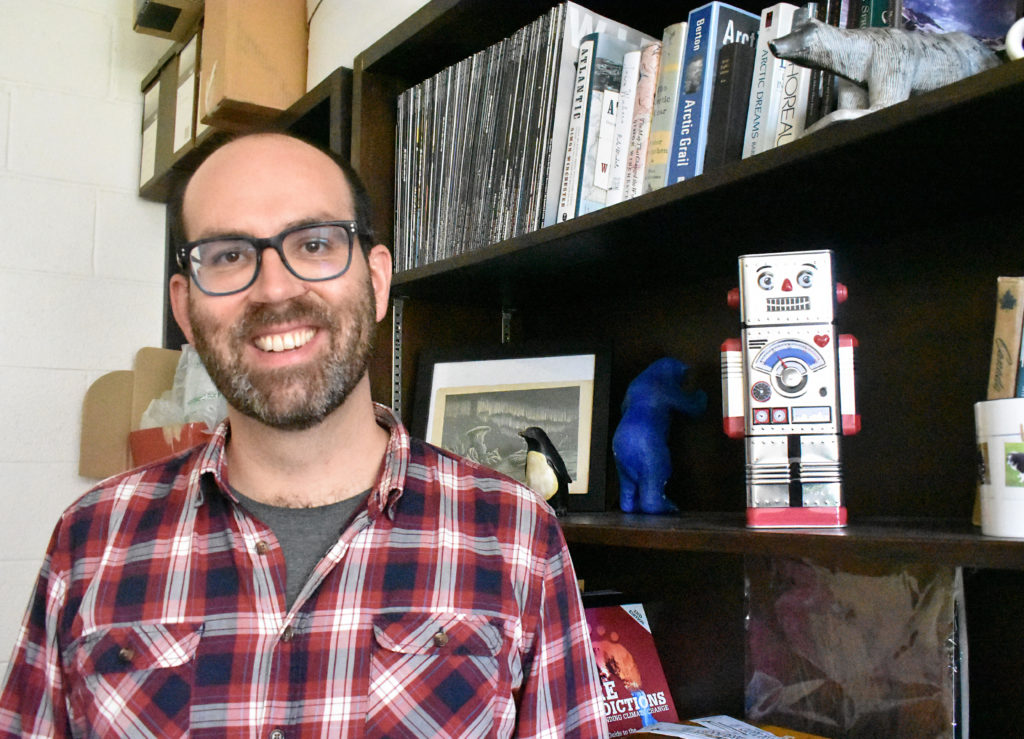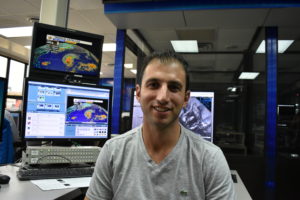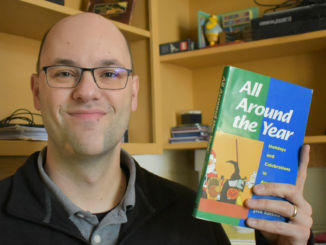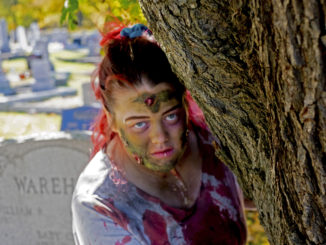Weathermen and women cannot magically conjure hurricanes like Prospero, but they can name them.

Melissa Wong
Kicker
In the prairies, Joel Finnis searched for tornadoes. Since moving to Newfoundland, his search has shifted to hurricanes.
After only a year in the province, he witnessed hurricane Igor in 2010 as it hit the island.
According to Finnis, an associate geography professor at Memorial University, he does not chase storms anymore – he lets them come to him.
He watched hurricane Igor approach the shores of Newfoundland while working at Memorial. The university did not cancel classes until, he says, the high winds caused havoc with doors and ceiling tiles were banging and falling to the floor.
“I can remember later on that afternoon when the winds had started to die down a little bit … a friend and I were out doing a storm walk,” Finnis said. “Maybe not a very smart thing to be doing, but we saw a chunk of plywood come whipping off one building and rolling down the road.
“It was fun. It was totally stupid. We should have been staying inside but instead no, no, we went for a walk. Watched plywood flying around, took our lives mildly in our hands.”
“Storms are named for communication purposes.”

“A hurricane is basically a swirling mass of thunderstorms, at the centre of which, is an area of low pressure,” said Eddie Sheerr, meteorologist with NTV.
“There is a list of 24 names put out every year by the World Meteorological Organization and they go from A to Z,” Sheerr said. “If the first name on the list was Anna, tropical storm Anna forms, tropical storm Anna dissipates and that’s it. The next storm that forms after Anna would be B … and you work your way down the alphabet.”
According to Sheerr, names are retired if it becomes attached to an infamously destructive storm. That way, the public will know which storm meteorologists and forecasters are talking about.
“Storms are named for communication purposes,” Sheerr said. “If it wasn’t named, I might be calling it something (and) another meteorologist might be calling it something else, especially in a day and age where communication is key and communication is widespread via social media.”
Hurricane Michael made landfall on Wednesday on the coast of the Florida Panhandle, causing a lot of damage and a number of fatalities. The powerful hurricane is expected to head towards Atlantic Canada.
“You’d have these jokes about how destructive your mother-in-law was.”
In the early 1950s, the United States began to use female names for storms. Neither Sheerr or Finnis knew for certain why all the names were originally female.
“I’ve heard stories that there were maybe too many jokes about naming hurricanes after your mother-in-law or your wife or something else,” Finnis said. “You’d have these jokes about how destructive your mother-in-law was.”
By the 1970s, the World Meteorological Organization used male and female names to identify storms and Canada followed suit.
There have been, though, times when the 24 names weren’t enough.
“It is pretty rare that you are going to run out of names,” Finnis said. “It happened in 2005. We ran out of names and hurricanes were still forming and they were forming really late into the year, like January and February. We ran out of letters, so they started becoming hurricane alpha, hurricane beta (and) hurricane gamma. So, we just started using Greek symbols.”
Greek symbols are also fitting because, according to mythology, hurricanes form above Poseidon’s watery kingdoms. Between the green sea and azure vault, they form into dreaded, rattling thunder before moving inland.
“I still get excited about it, even when they are small things that move through,” Finnis said. “Even when it’s just the remnant of hurricane Matthew.”
[embedyt] https://www.youtube.com/watch?v=kPlrTHuBlEU[/embedyt]




Be the first to comment